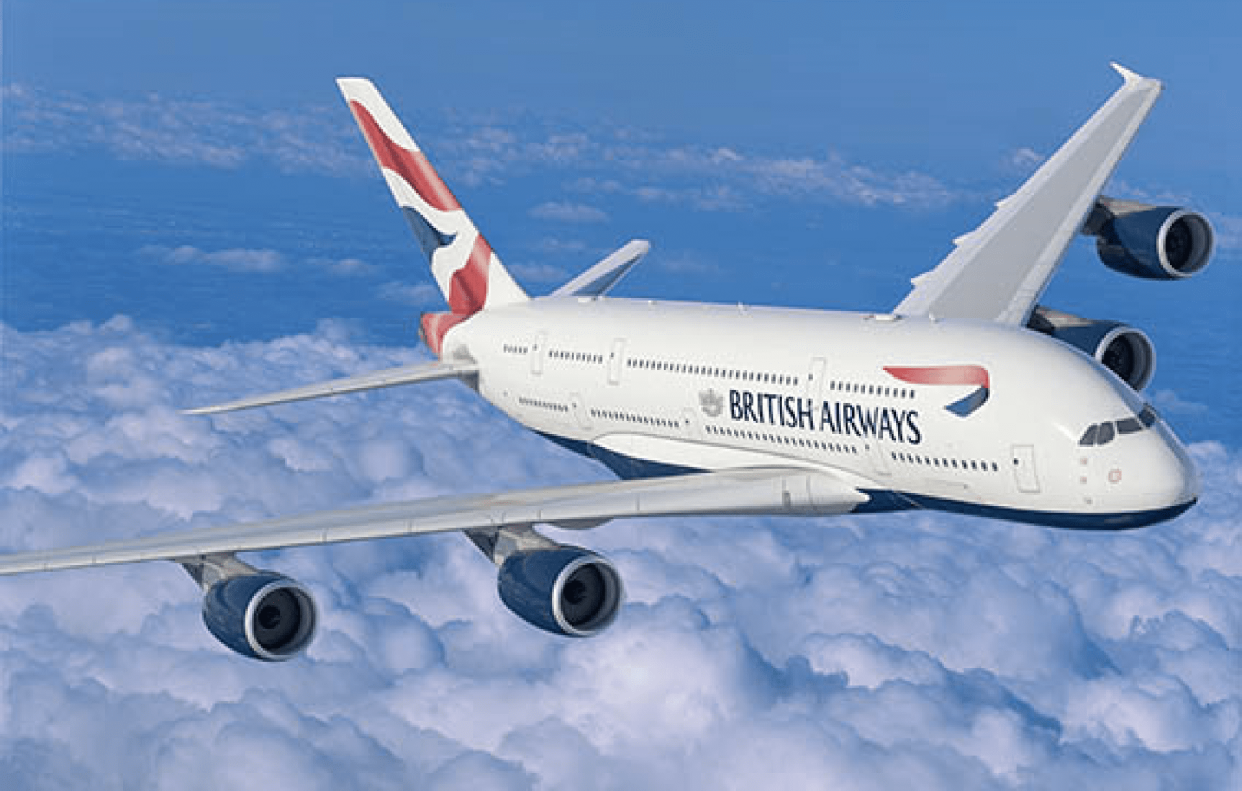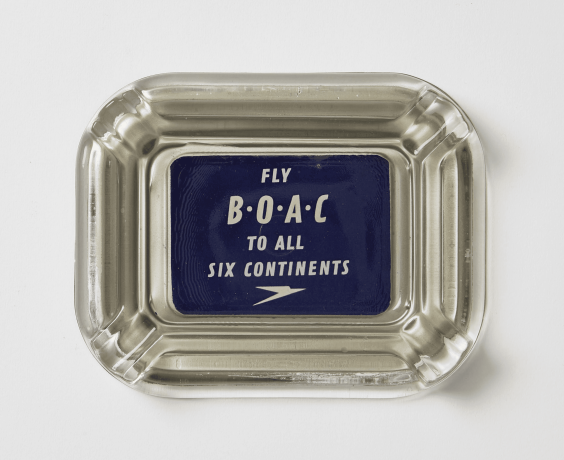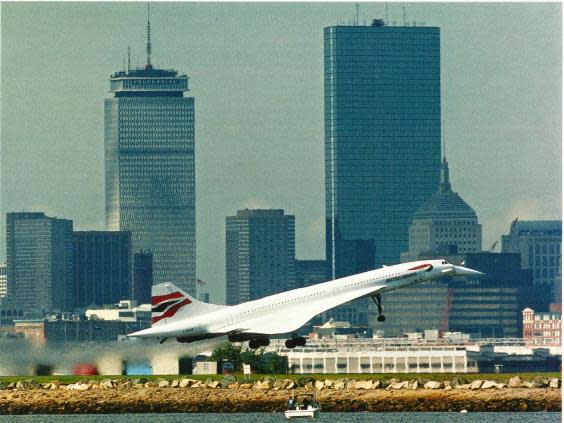British Airways: Seven things that define the UK national carrier on its 100th anniversary

It’s been a century since the maiden flight of one of BA’s predecessor airlines.
Here are seven key objects that helped make the carrier.
Speedbird logo (1932)
Every British Airways pilot uses the callsign “Speedbird” to identify his or her specific flight – starting with Speedbird One for the London City-New York JFK link.
Some travellers believe it is a reference to Concorde, the supersonic jet that BA operated from 1976 to 2003. In fact, the term originated in 1932 to describe not an aircraft but an emblem.
Theyre Lee-Elliott, a graphic designer, was in his twenties when he devised the logo for use on promotional posters for Imperial Airways. The polygon was instantly inspirational, signalling the optimism and aspiration of flight, and it soon began to appear on aircraft.
The logo, but not the callsign, was retired in 1984, but made a return as part of the retro BOAC livery on a BA Boeing 747. As I write, it has just landed at Heathrow from Miami as Speedbird 208.
BSAA Lancastrian at Heathrow (1946)
In the year that followed the Second World War, British Airways’ predecessor airlines accomplished an extraordinary amount. BOAC launched the first British civilian flights across the North Atlantic (refuelling in Ireland and Newfoundland en route to New York), while BEA established a busy flying programme from Northolt in northwest London – which made the aerodrome temporarily one of the busiest hubs in the world.

But the most significant event was right at the start of the year, when a British South American Airways (BSAA) Lancastrian departed on a proving flight from a new airport set amid meadows to the west of London.
The airfield, comprised largely of grass strips and tents, was named after the tiny hamlet it displaced: Heath Row.
BEA Route Map (1962)
In the early 1960s passengers on British European Airways were handed a small, neat brochure which gave a succinct summary – in English, French and German – of onboard facilities. It also contained an intricate route map. A surprising number of destinations have remained the same. All the great European capitals are here, along with business locations such as Frankfurt, Milan and Zurich – plus leisure destinations like Palma, Nice and Venice.
Yet some routes have been lost over the decades. Birmingham and Bournemouth are no longer connected with Heathrow, and the intricate Scottish island services are now operated independently by Loganair.
Berlin looks surprisingly busy, that is because after the division of Germany, only airlines from Britain, France and the US could serve the city. That entitlement ended after the unification of Germany following the fall of the Berlin Wall in 1989.
Audio stethoscope (1980s)
Read more
Why Croydon Airport is the unsung hero of British aviation
To the 21st-century passenger watching their seatback TV or listening to music via their AirPods, the concept seems ridiculous: actual film screens pulled down by cabin crew at strategic locations in the 747, and passengers handed (or rather rented, at £3 a pop) plastic stethoscopes. But at the time, after decades without inflight entertainment, the concept was revolutionary. Even the Sony Walkman had not been invented. We transatlantic travellers gratefully plugged them into the pneumatic sound system in the armrest (just next to the ashtray) and sat back to enjoy the latest Hollywood blockbuster.
Concorde Supersonic Certificate (1980s)
Before long-haul travel became affordable, extensive and comfortable, inflight certificates were commonplace. Typically they were awarded for crossing the Equator, which British Airways did many times each week on routes to South America, Africa and Australia.
Concorde was different. This supersonic aircraft was so remarkable that any flight was worthy of a certificate signed by a pilot – provided he or she had time during the sub-four-hour flight between London Heathrow and New York JFK.

This was the era when the sun rose in the west: on the evening departure in winter, it was dark in the UK, but Concorde overtook the sun to land in daylight.
In the 27-year career of the world’s only successful plane to fly at twice the speed of sound, only around three million passengers flew on a BA Concorde. I was lucky enough to be one of them – and have the certificate to prove it.
Flower duet musical score (1989)
In the second half of the 19th century, Paris was in full voice, operatically speaking. Georges Bizet had bestowed the world with Carmen shortly before he died, tragically early, aged 36. Léo Delibes continued the good work with Lakmé – celebrating the Hindu goddess of wealth. The most memorable tune was, unusually, a duet rather than an aria. The Flower Duet is sung by Lakmé and her servant Mallika. The latter begins with the words Sous le dôme épais, “Under the leafy dome”, as they gather flowers – as the duet is known in musical circles.
http://players.brightcove.net/624246174001/default_default/index.html?videoId=5837728067001
Support free-thinking journalism and subscribe to Independent Minds
Unwittingly, Delibes had scored the soundtrack for a generation of British Airways commercials. A big-budget BA ad in 1989 used a version of the tune, and it has endured for three decades: call the airline and you will hear a guitar version. Now that’s what I call hold music.
A380 flight deck display (2013)
Many of the pilots flying BA’s fleet of Airbus A380 “SuperJumbo” long-haul aircraft transferred from the short-haul fleet – currently comprising the Airbus A320 family. They find the bigger aircraft remarkably similar, thanks to the planemaker’s emphasis on commonality across its jets.

To the lay person, the most obvious elements are the joysticks, one for each pilot, and the thrust levers in the centre of the console – delicate controls for vast and powerful engines capable of lifting nearly 500 people and tonnes of cargo for thousands of miles. But the pilot’s attention is on the all-important instruments, which have transitioned from an analogue to a digital age.
Thanks to the head-up display (HUD), the key parameters of airspeed, altitude, angle of attack and heading are deftly displayed on transparent screens that remove the requirement to glance back and forth between controls and cockpit window.
This is an edited version of an article that appears in the August edition of High Life magazine.
Read more
Read more Why Croydon Airport is the unsung hero of British aviation



